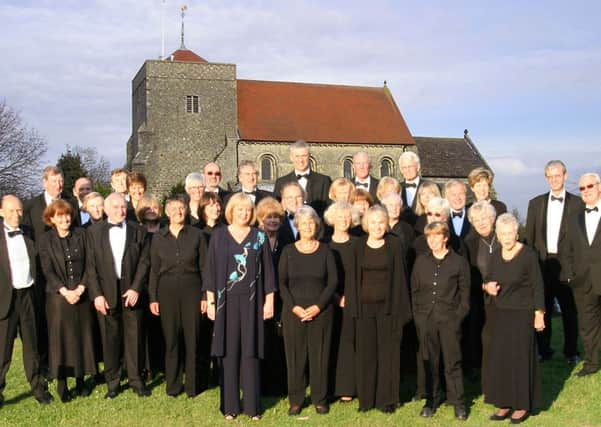Concert's two halves distinctly different


Each half differed in character both by the motivation of the performances and in the nature of the music given either side of the interval.
Chanctonbury must be applauded to the rafters for bringing into their repertoire and willingly tackling the challenging work that featured in the opening half.
Advertisement
Hide AdAdvertisement
Hide AdDona Nobis Pacem was composed by Ralph Vaughan Williams for the Huddersfield Choral Society’s centenary concert on October 2, 1936. Despite a sombre tone to some of the text, directly related to the growing danger of war, there is optimism in the music that possibly reflects the mood held by many at that time that those war clouds would pass away.
No doubt due to a lack of familiarity with this difficult piece, there were some insecurities on display. These, however, were insufficient to distract the audience from this moving music or large enough to dilute the passion with which the performers clearly felt for and gave to it.
The star turns of this pre-interval part of the concert came from the modest brilliance of the two soloists. The soprano, Claire Seaton, quietly exhibited a strikingly pure voice – touching in its poignancy – during the hushed prayer-like passages; and then serenely soared with great beauty in the loud sections, overcoming the competitive volume of the full orchestra. The expressive tonal warmth in the voice of baritone James Cleverton was thrilling to experience as he deftly handled the elegant melodic lines, projecting impeccable diction in each meaningful word that many a choral singer might value as a model to emulate.
By the fourth section, a setting of Walt Whitman’s Dirge for Two Veterans, the Chorus had well and truly hit their stride with some enjoyably powerful singing, particularly from the women.
Advertisement
Hide AdAdvertisement
Hide AdAnd in the final section, there were some wonderfully glorious contributions by the choir, with much excellent triumphant and weighty counterpoint from the Orchestra that only lacked the sound of bells to top it off.
As a coda, a short reprise of the opening prayer circuitously brought this testing but beautiful work to a close. Chanctonbury must do it again!
Haydn’s Nelson Mass, given in the second half, is more staple fare like The Messiah, bread and butter to numerous choral societies throughout the land. Where the first half may have accommodated the edge of struggle at times, the performance here was comfortably smooth, forthright and finely balanced, joyously concluded and distinctively laid out for the audience to ingest.
And yet, for me, as masterly a composer as Haydn undoubtedly was, it did not have the bite or possess the rich depth of the music of the first half.
Advertisement
Hide AdAdvertisement
Hide AdWas it just the production of the familiar that gave me little feeling? To make it tick, is something very ‘special’ required in performance of such seemingly perfunctory music? Or does this work and its ilk (the ever-challenging music of JS Bach aside, of course!) no longer register anything sufficiently meaningful to say to me (and maybe some performers) because of that over-familiarity? It’s a singular point of view.